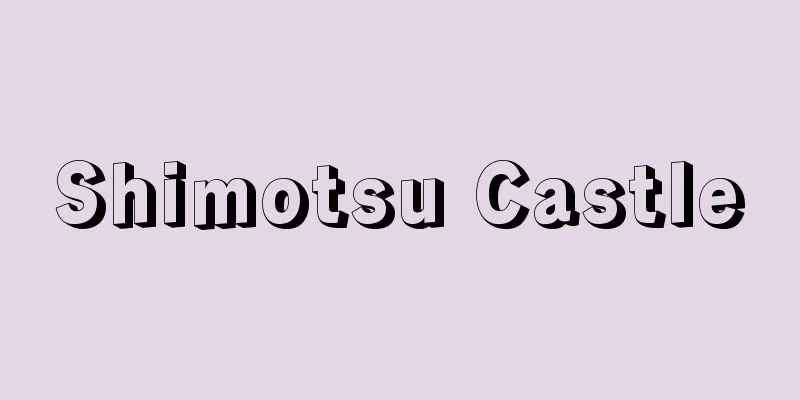Hayashi

|
A Japanese musical term. A noun derived from the verb "hayasu (musical accompaniment)." (1) Musical accompaniment for folk performing arts. There are many types of musical accompaniment for welcoming the gods and performing divine acts at festival sites, roadside music played when the spirits of the deities are brought to the shrine, and yatai-bayashi, which is played on instruments carried on floats and yatai (floats) and played on the parade route. There is also dance music to accompany singing and dancing at festival sites and Bon Odori dances. There are many other types of musical accompaniment for folk performing arts, and although the instruments and techniques are diverse, many of them are based on old traditions or have been influenced by them. (2) Hayashi in Nohgaku. In Noh and Kyogen, they accompany chants, dances, and acts, and are played when characters enter or exit the stage. There are four instruments in the four-beat pattern: flute (nohkan), small drum, large drum, and large drum. All Noh plays include hayashi, and are divided into "daishomono" (large-scale plays) without drums, and "taikomono" (large-scale plays) with drums and four-beat rhythm. Even in formal Kyogen performances, about one-third of the pieces require hayashi, and in addition to "daishomono" and "taikomono," there are rare pieces that are played with flute and small drum, or flute only. Except for "Okina," in which there are three small drums, the pieces are composed of one person per instrument, and the performers line up from right to left facing the hayashi area at the back of the stage, with flute, small drum, large drum, and large drum performing. In addition, informal performances that require hayashi include mai-hayashi (the latter half of the Noh play is performed by the shite actor, dressed in a crested kimono and hakama, dancing to the accompaniment of the jiutai (chants) and hayashi), su-hayashi (instrumental music only, with no singing or dancing), and iccho (a portion of a Noh play is performed by one of the ko-tsuzumi, o-tsuzumi, or taiko drummers and one singer). (3) Music for Kabuki. Based on their functions, they can be broadly divided into Kage-bayashi, De-bayashi, and Ritual-bayashi. [1] Kage-bayashi (also called Geza music) is the music for effects and decoration in plays and dramatic dances, and is performed behind the black blinds at the left side of the stage or other places behind the stage. It is made up of Nagauta songs, shamisen, and musical instruments, and forms a very diverse technique, with effects also being diverse, such as creating an atmosphere at the opening, changing of props, and closing of the play, defining the scenes and characters, and modifying the lines. Large drums are used as musical instruments, but in addition to four-beat instruments, instruments from folk and folk performing arts are also incorporated, making it a wide variety. [2] Enbayashi is a musical instrument played on stage to accompany the dance. It is located at the bottom of a stage with singers and shamisen on the top. The instruments used are a flute (Nohkan or bamboo flute), a small drum, a large drum, and a large drum. However, rather than one person per instrument, there are often multiple small drums and large drums. [3] Ritual music is played according to theatrical customs. It was simplified after World War II, but even today, ceremonial music such as "chakuto shagiri" (also called "chakuto" for short) is played to inform the dressing room that the doors are opening about 30 minutes before the start of the show, and "uchidashi taiko" is played to announce the end of the show and pray for a large audience the next day. The instruments used are large drums, large drums, and Nohkan. (4) Yose (various theatre) accompaniment. It was established under the influence of Kabuki accompaniment, and can be classified into ceremonial accompaniment, entrance accompaniment, hamemono accompaniment, and iromono accompaniment. [1] Ceremonial accompaniment includes the "Ichiban Taiko" drum beat that is struck when the doors open, the "Niban Taiko" drum beat (also called "Chikuto") that signals that the performer has entered the dressing room, and the "Uchidashi" drum beat at the end of the performance. [2] Debayashi has a different meaning from Kabuki accompaniment, and is the accompaniment played when the performer steps onto the stage. It uses parts of Nagauta, Kiyomoto, Gidayu, or zokukyoku, and there are many types. [3] Hamemono bayashi is music played in rakugo to enhance the story, and is often found in Kamigata rakugo, but also includes music and musical instruments from hand dancing and shibō-bashi. [4] Iromono bayashi is music to enhance magic tricks and acrobatics. The main instrument played by the vaudeville performer is the shamisen, but the musical instruments include the gakudaiko (a thin-bodied drum), taiko drum, gong, and yosuke (a gong), and are usually performed by a single Zenza. [Kobayashi, Responsible] [Reference] | |Source: Shogakukan Encyclopedia Nipponica About Encyclopedia Nipponica Information | Legend |
|
日本音楽用語。動詞「はやす(囃)」を名詞化した語。 (1)民俗芸能の囃子。祭場での神迎えや神がかりわざの伴奏である神楽(かぐら)囃子、神霊のお渡りに演奏する道中囃子、山車(だし)や屋台に楽器をのせそれを奏でながら道を練る屋台囃子などのほか、祭場での歌舞や盆踊りをはやす踊り囃子、そのほか民俗芸能の囃子は多種あり、楽器や手法もさまざまであるが、古い伝統あるいはその流れを受けているものが多い。 (2)能楽の囃子。能および狂言において、謡(うたい)や舞・働キの伴奏をするほか、人物の登場・退場などの際に演奏される。四拍子(しびょうし)とよばれる笛(能管(のうかん))、小鼓(こつづみ)、大鼓(おおつづみ)、太鼓(たいこ)の4種の楽器がある。能は全演目に囃子が入り、太鼓が加わらない「大小物(だいしょうもの)」、太鼓が入り四拍子ではやす「太鼓物」に分けられる。狂言は正式に演じても囃子を必要とする曲は約3分の1で、「大小物」「太鼓物」のほか、まれに笛・小鼓、あるいは笛だけではやす曲がある。『翁(おきな)』に小鼓が3人出る以外は1楽器1人の構成で、演奏者は舞台奥の囃子座に向かって右から笛、小鼓、大鼓、太鼓の順に並び演奏する。また囃子を要する略式演奏に、舞(まい)囃子(能の後半部を紋付・袴(はかま)姿のシテ方が地謡(じうたい)と囃子によって舞う)、素(す)囃子(謡も舞もなく器楽だけを奏でる)、一調(いっちょう)(小鼓・大鼓・太鼓のうち1人と謡1人で謡曲の一部を演奏する)などがある。 (3)歌舞伎(かぶき)の囃子。その効用から陰(かげ)囃子、出(で)囃子、儀礼囃子に大別できる。〔1〕陰囃子(下座(げざ)音楽ともいわれる)は劇および劇的舞踊における効果・修飾音楽で、舞台下手(しもて)の黒御簾(くろみす)ほか舞台の陰で演奏される。長唄(ながうた)の唄・三味線および鳴物で構成され、非常に多彩な手法を形成しており、効果も幕開き・道具替わり・幕切れの雰囲気の醸成、場面や登場人物の規定、台詞(せりふ)の修飾など多様である。鳴物の楽器は大太鼓が活用されるが、四拍子のほか民間芸能・民俗芸能の楽器も取り入れられて多種にわたる。〔2〕出囃子は舞踊の伴奏をするため舞台で演奏される鳴物で、上段に唄・三味線が並ぶ山台(やまだい)の下段に位置し、楽器は笛(能管、竹笛)、小鼓、大鼓、太鼓の四拍子が用いられるが、1楽器1人ではなく、小鼓、太鼓は複数になることが多い。〔3〕儀礼囃子は芝居の習俗に従い打たれているもので、第二次世界大戦後は簡略化されたが、いまも開幕約30分前に開場を楽屋へ知らせる「着到砂切(ちゃくとうしゃぎり)」(略して「着到」ともいう)や、終演を知らせ翌日の大入りを願う「打ち出し太鼓」などが演奏されており、楽器としては大太鼓、太鼓、能管が使われる。 (4)寄席(よせ)の囃子。歌舞伎囃子の影響を受けて成立したもので、儀礼囃子、出囃子、はめ物の囃子、色物(いろもの)の囃子に分類できる。〔1〕儀礼囃子としては、開場時に打つ「一番太鼓」、演者が楽屋入りしたことを知らせる「二番太鼓」(「着到」ともいう)、終演時の「打ち出し」などがある。〔2〕出囃子は歌舞伎の出囃子とは意味が違い、演者が高座に上るときの囃子で、長唄、清元(きよもと)、義太夫(ぎだゆう)または俗曲などの一部を用い、その数は非常に多い。〔3〕はめ物の囃子は落語のなかで噺(はなし)を修飾するために演奏するもので、上方(かみがた)落語に例が多く、また手踊りや芝居噺の音曲や鳴物も含まれる。〔4〕色物の囃子は奇術や曲芸などの修飾音楽である。寄席の囃子は、弾き唄いの三味線が主奏楽器であるが、鳴物の楽器も楽太鼓(がくだいこ)(胴の薄い張り太鼓)、太鼓、銅鑼(どら)、与助(よすけ)(当(あた)り鉦(がね)のこと)などがあり、主として前座(ぜんざ)が1人で演奏する。 [小林 責] [参照項目] | |出典 小学館 日本大百科全書(ニッポニカ)日本大百科全書(ニッポニカ)について 情報 | 凡例 |
Recommend
Allelomorph
...To clarify this issue, in 1911, WL Johansen (1...
vertugadin
…A petticoat with a frame that originated from th...
Flocculant - Industrial
Additives used in colloidal solutions to aggregate...
Arrest - Taiho
It refers to a measure to detain a suspect. The C...
Podocarpus macrophyllus (Thunb.) D.Don
It is an evergreen tall tree of the Podocarpus fam...
Orkhon Turkic Language - Orhon Turkic
…among the modern Turkic languages, it can be sai...
Curatores Aquarum (English)
…The work of Agrippa, the censor in 33 BC, is par...
Cups and balls
…An Egyptian papyrus from around 1700 BCE contain...
Round trip mountain climbing - Oufukutozan
...Therefore, in a broad sense, mountaineering te...
Dog-dog - Kukuo
...It is often found in secluded places such as r...
Ambrakia - Ambrakia
Please see the Alta page. Source: Encyclopaedia B...
Fixed assets - Koteishisan (English spelling) fixed assets
In corporate accounting, assets that a company us...
Prehepatic jaundice - prehepatic jaundice
…Normal serum bilirubin values are 0.2-0.8 mg/d...
Oklahoma!
…American composer who wrote many classic musical...
Ackermann - Konrad Ernst Ackermann
He was the founder of the Ackermann family of Ger...









